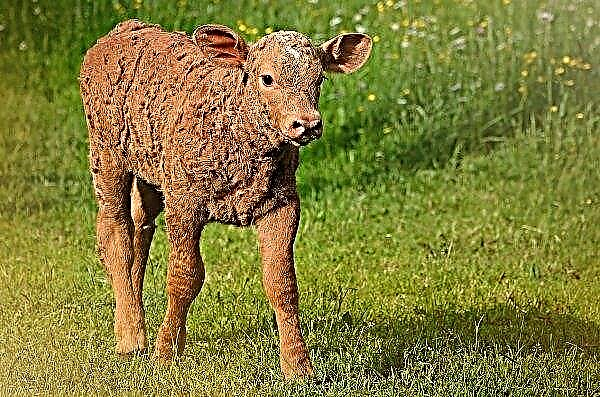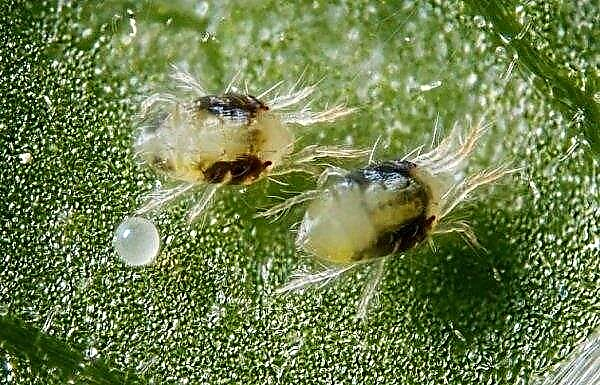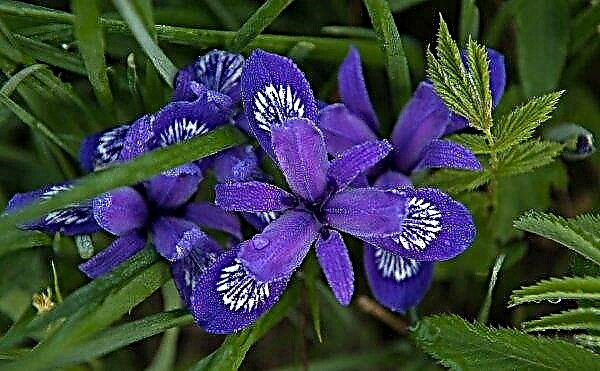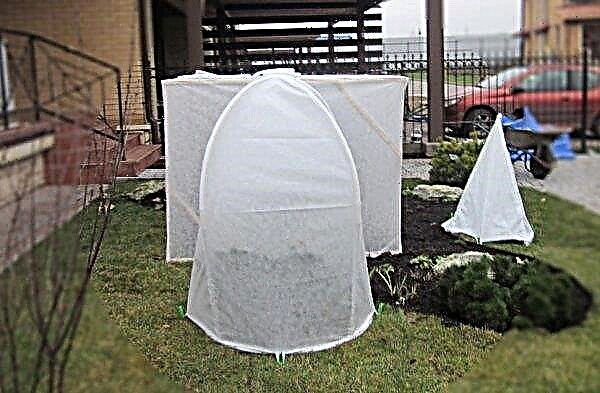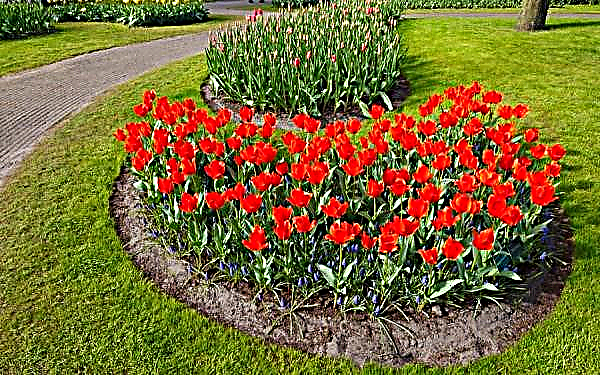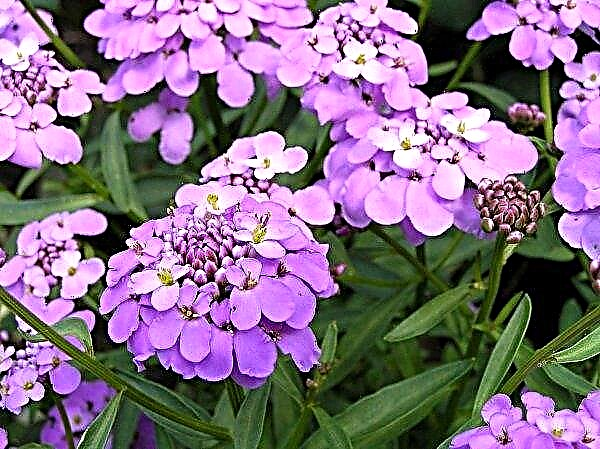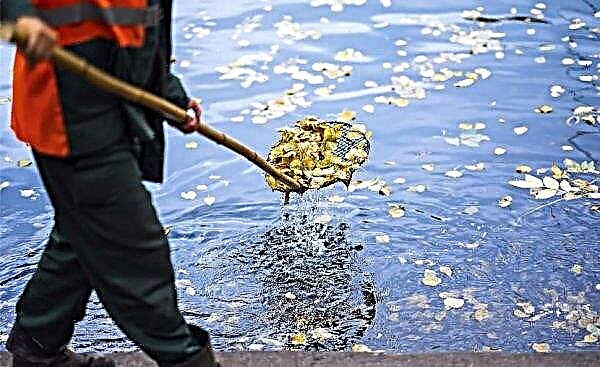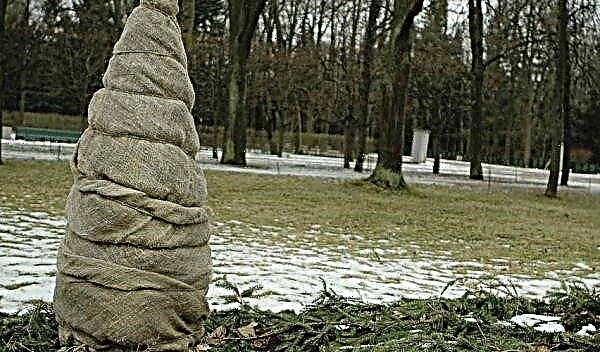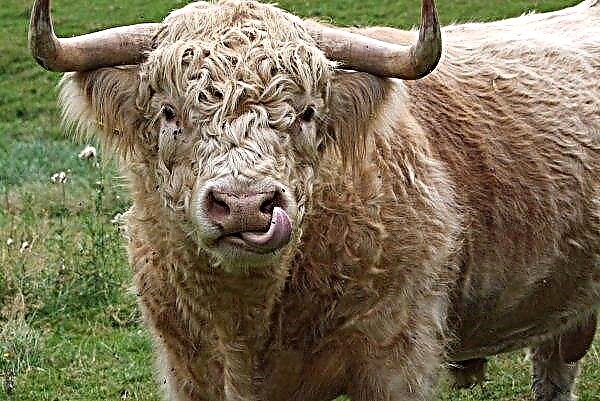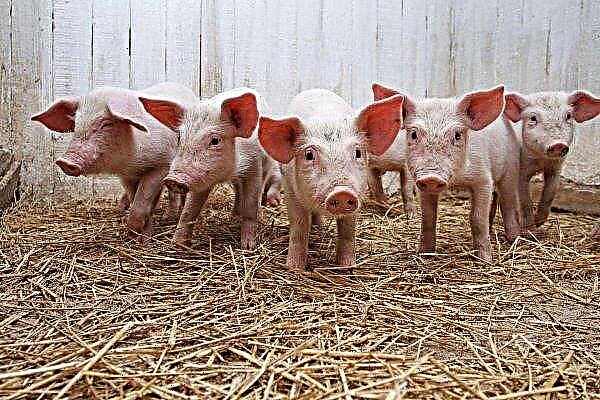Cattle care features include cleaning the hooves of animals. The growths that appear over time, give pets discomfort and can lead to injury. In this article, we consider a machine for fixing and trimming hooves for cows, an example of self-manufacturing a device.
Cow Locking Machine
In farms, the number of animals can be in the hundreds of heads, manual trimming of hooves in this case will take a lot of time and effort, and more than one person. In addition, animals have great power and during handling can seriously injure their staff.
Did you know? Cows have excellent visual memory: they remember and recognize people's faces.
Fixing machines will help speed up the cleaning procedures, immobilize the animal, protecting it from human injury. In addition, in modern models, an electric or mechanical lift is provided, with which it is faster and easier to fix a burenka.
Principle of operation
The machine is a kind of stall with clamps. A cow placed in the structure with the help of a lift is lifted, while its limbs barely touch the surface of the floor. Under the chest, the animal is supported by wide belts, and the head is located in a special frame.
The hoof necessary for processing with the help of a belt with a loop is fixed in a position convenient for the processing specialist. The operator uses special tools to carry out a procedure that, thanks to the design, does not take much time.
Benefits
Most designs have small parameters and are usually equipped with a device for free movement.
Among other advantages:
- painless fixation (internal organs of livestock are not compressed);
- the animal is not stressed;
- the operator is protected from accidental injuries (limbs are fixed);
- the ability to carry out other procedures (trimming horns, medical care);
- the help of several people is not required, one specialist is enough;
- during the day you can process more than a hundred heads of cattle.
Disadvantages
The lack of machines can be identified in its design. Consider a few nuances:
Consider a few nuances:
- a light machine with unreliable support can cause injury to both the animal and the operator;
- incorrectly positioned straps for fixing will create inconvenience in work;
- the animal will behave more calmly if there is something to lean on in the machine;
- it is preferable to choose a design with vertical fixation, since the lateral version can cause damage or death to the fetus in a pregnant cow;
- the support should be at the same level with the floor, with a high slope of the descent, the cattle can slip and be injured.
How to make a do-it-yourself hoof trimming machine
The commercially available designs are rational to purchase if the farm has a large number of cattle. In another case, for one or two cows, such a purchase will be expensive, it is easier to make a machine with your own hands.
Materials and Tools
To manufacture the simplest fixing machine, you can use improvised materials that can be found in any household. So, in production you will need:
So, in production you will need:
- Boer;
- wood hacksaw;
- nails
- hammer;
- wooden posts - 6 pcs.;
- boards - 8 pcs.;
- metal chain;
- leather belts.
Did you know? Cows have a sense of time: being late with milking can lead to a decrease in milk fat and milk yield by 5%.
Step-by-step manufacturing
The size of the stall will be one and a half meters in length and one meter in width.
Machine for fixing a cow and trimming hooves per hour: video
Next step by step:
- Prepare four columns 1.70 m long and two columns 0.70 m each.
- Drill holes under the perimeter along the intended perimeter in the ground for the columns. At the same time, higher stakes will form the basis of the quadrangle, and two small ones need to be driven along its edge to fix the cow's limbs on them, at a distance of half a meter from the base. For the stability of the structure, 20 cm of column should go to the ground.
- Next, you need to fix the pillars with boards, two of them in size correspond to the lateral, wide sides of the stall, one to the front side, where the head of the animal will be.
- We fix the lower support posts on both sides with nails with two boards crosswise with the support stakes behind the structure.
- The final step is to install the cross member on two small pillars.
The chain holding the animal in place will be snapped onto the poles directly for the procedure, the same applies to belts securing the limb of the cow.
The process of trimming hooves on the machine
The outer stratum corneum on the hoof is designed to protect its inner part. It constantly grows, forming solid flows and growths. If it is not periodically trimmed, the animal will feel discomfort when walking, will begin to limp.
Important! When cracks appear on the stratum corneum, the likelihood of infections is high, which will lead to serious health problems and reduce cow productivity.
Hoof Trimming Rules
For the first time, such a procedure should be carried out under the guidance of an experienced specialist, it is also important to know the frequency of the conduct. Basic pruning rules:
Basic pruning rules:
- When stalling cows, the procedure is carried out up to three times a year, with a loose method - twice a year.
- The day before the planned pruning, the cow is kept on a wet litter to soften the horn formations, which will facilitate the process.
- It is necessary to prepare a number of tools, be sure to sanitize them before work.
- You need to make sure that the animal is comfortable, and its belts reliably hold.
- If the animal is too excited, you can enter him sedative.
- Cattle should be handled calmly, without screaming, so as not to provoke stress.
- The hooves are pre-cleaned of dirt, examined for inflammation, and if necessary treated with an antiseptic.
- Work is carried out slowly so as not to damage the inner layer.
- All sharp edges gently grind, round.
How to drive a cow into a machine
Typically, the machine is installed when exiting the barn, so the cow herself enters the structure. The back door closes behind it, all the necessary belts are put on, the head is fixed in a special recess.
At home, the machine is stationary, they build it where the territory of the economy allows. The cows are taken out of the barn on a leash, throwing a rope loop around the neck. The meek cattle will follow the owner herself, you don’t need to shout at her, talk affectionately.
So that the animal does not worry inside the structure, you can put in front of him an armful of hay.
Important! Note that you need to work very carefully, if you touch the “live” layer, this can provoke inflammation. It is better to leave part of the old horn if you are inexperienced.
Execution sequence
Prepare the tools, sanitize them. Further actions are performed in the following sequence:
- The animal is driven into a machine, immobilized using belts.
- An initial examination will determine the setting of the hoof, the ratio of “fingers” and “heels”. Take measurements.
- Preliminary carry out cleaning of dirt.
- Begin with the forelimbs, from the inner layer gradually removing keratinization.
- The old gray-colored layer is removed with a knife until white. Care must be taken to keep the surface solid.
- Nippers are installed at a distance of 3 mm from the edge of the sole: they will help to smooth the surface of the walls evenly.
- The surface is leveled with a milling cutter, achieving a line perpendicular to the position of the limb.
- Sticking shreds of wool are removed with scissors.
- Round off all sharp edges with a file.
- Thus, all soles are treated.
- With the correct procedure, the sole will lie flat on the surface of the tester or blade of the knife.

Processing hooves after trimming
The trimming procedure at the end of the work requires disinfecting treatment: a fresh surface is open for various infections.
Subtleties of the disinfecting procedure:
- Thoroughly clean the surface of the dust residue of the dead layer, inspect for cracks or wounds.
- A solution of copper sulfate or formaldehyde is used as an antiseptic.
- After treating the hooves, rinse with clean running water under pressure.
- If there are several animals on the farm, the liquid in the disinfecting bath needs to be changed for each separately. This is done to avoid infection.
- Ideally, the depth of the capacity for the bath should be about 15 cm to moisten not only the hooves, but also part of the limb.
In a small farm, with a little effort, the cleaning process can be facilitated. A machine made by yourself will allow you to save money on its purchase, you do not have to ask for help from neighbors. Remember that timely cleaning of the limbs is one of the most important conditions for the normal functioning of a horned pet, the key to its high productivity.
Remember that timely cleaning of the limbs is one of the most important conditions for the normal functioning of a horned pet, the key to its high productivity.

